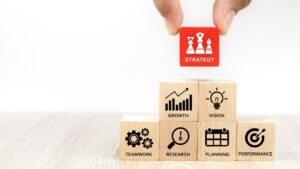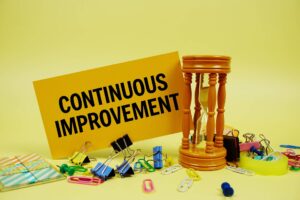Empowering Academic Institutions for Success Through Strategic Planning, Effective Navigation, and Continuous Improvement
 Given changing landscape of higher education, institutions face numerous challenges that require strategic foresight, effective problem-solving, and a commitment to continuous improvement. Together, we can help institutions develop clear and achievable strategic plans, navigate complex situations, and empower faculty and staff to ensure continuous growth and improvement. This Blog explores these key areas and provides actionable recommendations for institutions striving for excellence.
Given changing landscape of higher education, institutions face numerous challenges that require strategic foresight, effective problem-solving, and a commitment to continuous improvement. Together, we can help institutions develop clear and achievable strategic plans, navigate complex situations, and empower faculty and staff to ensure continuous growth and improvement. This Blog explores these key areas and provides actionable recommendations for institutions striving for excellence.
Developing Clear and Achievable Strategic Plans
 Importance of Strategic Planning
Importance of Strategic Planning
- Vision Alignment: Strategic planning ensures that all efforts are aligned with the institution’s vision and mission.
- Resource Allocation: It helps in the effective allocation of resources, maximizing efficiency and impact.
Key Components of a Strategic Plan
- Vision and Mission Statements: Clearly defined vision and mission statements that guide the institution’s goals and actions.
- SWOT Analysis: Identifying strengths, weaknesses, opportunities, and threats to inform strategic decisions.
- SMART Goals: Setting Specific, Measurable, Achievable, Relevant, and Time-bound goals.
Navigating Complex Situations Effectively
Challenges in Higher Education
- Financial Constraints: Managing limited resources while striving for excellence.
- Technological Advancements: Adapting to rapid technological changes in teaching, learning, and administration.
- Accreditation Compliance: Ensuring compliance with evolving standards.
Strategies for Effective Navigation
- Crisis Management: Develop and implement robust crisis management plans to respond swiftly and effectively to emergencies.
- Decision-Making Frameworks: Utilize structured decision-making frameworks to evaluate options and make informed choices.
- Collaboration and Communication: Foster a culture of collaboration and open communication to address challenges collectively.
Empowering Faculty and Staff for Continuous Improvement

- Professional Development: Continuous learning opportunities enhance the skills and knowledge of faculty and staff.
- Engagement and Motivation: Empowered employees are more engaged and motivated, leading to higher productivity and job satisfaction.
Achieving Your Institution’s Goals with Confidence
- Alignment of Efforts: Ensure that all efforts, from strategic planning to daily operations, are aligned with the institution’s goals.
- Continuous Improvement: Foster a culture of continuous improvement by regularly evaluating and refining processes and practices.
Conclusion
Achieving institutional success requires a holistic approach that combines strategic planning, effective navigation of complex situations, and continuous improvement of faculty and staff. By working together, we can help institutions develop clear and achievable strategic plans, confidently navigate challenges, and empower their teams for sustained excellence.
For more information about our services and how we can help you achieve your goals, visit our website at www.SALAMentor.com. Let’s take the next step in academic leadership, together.

